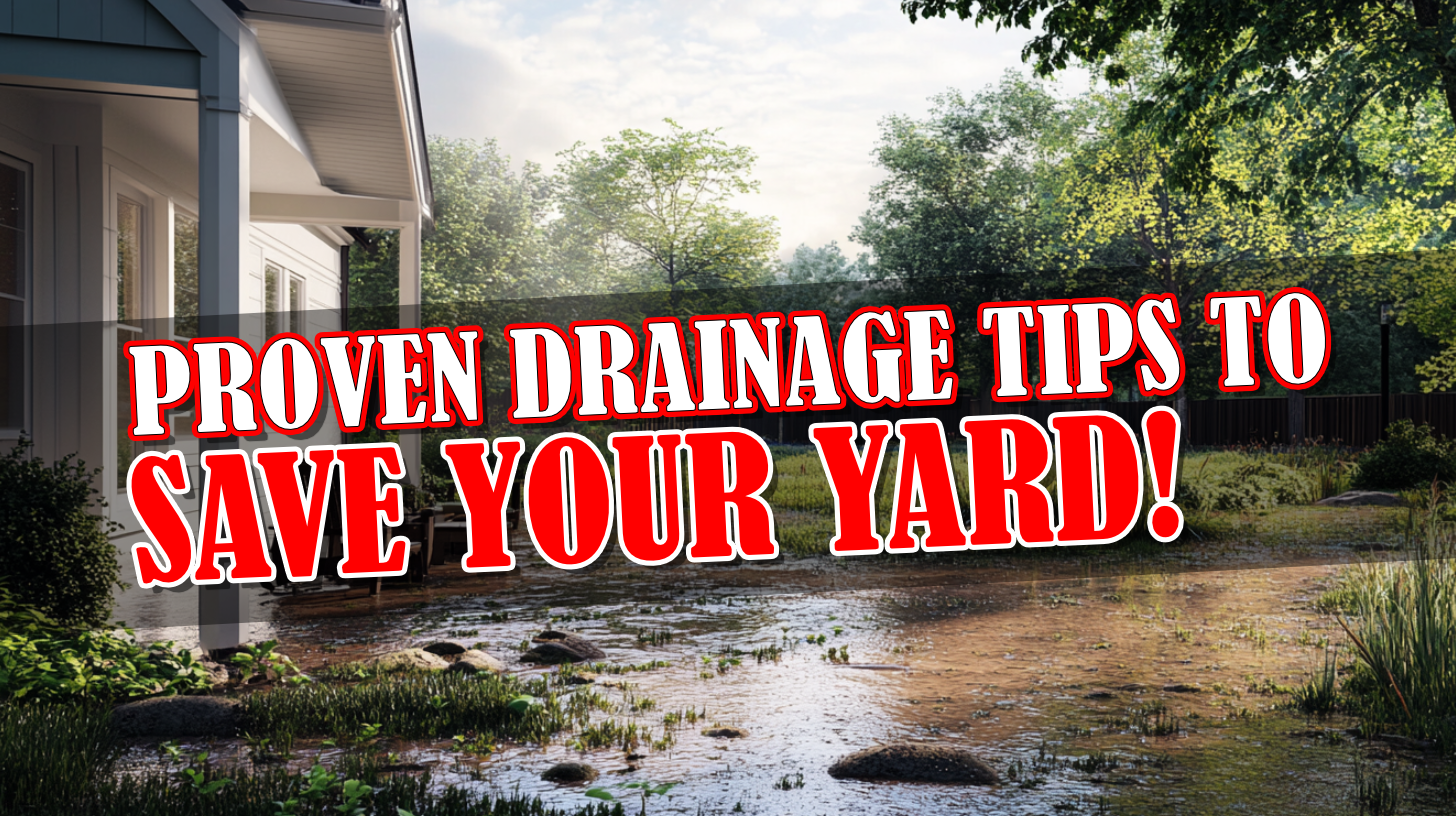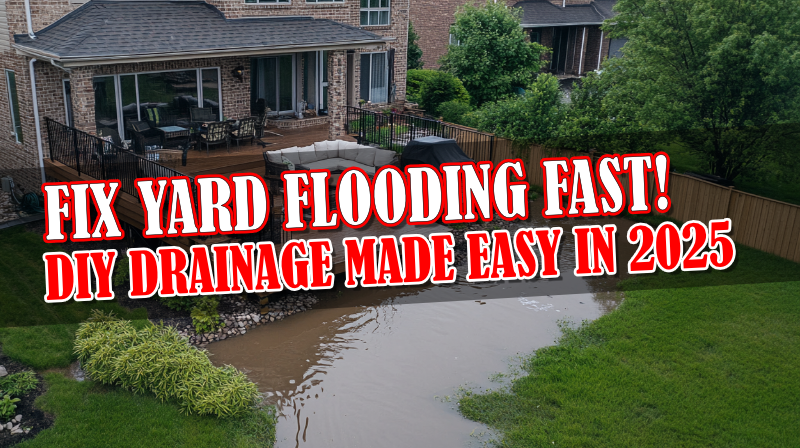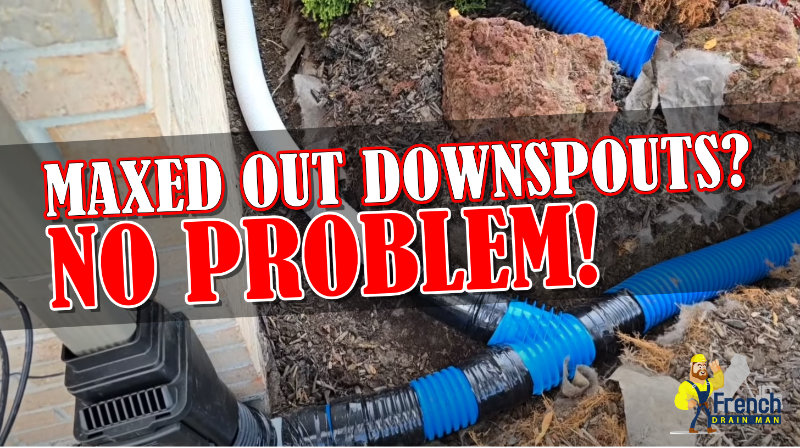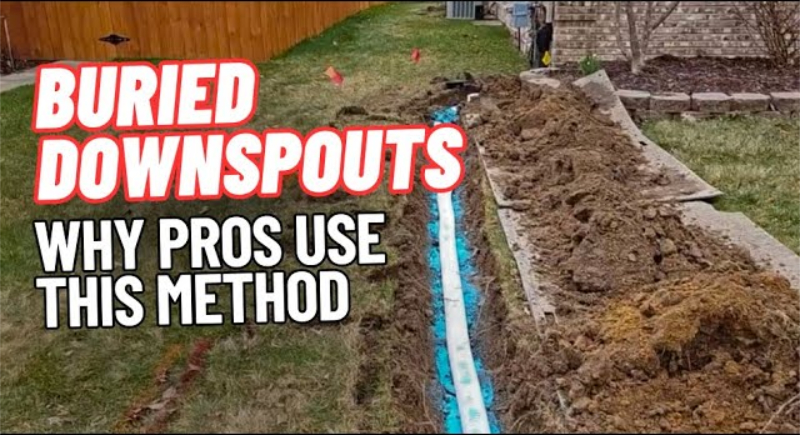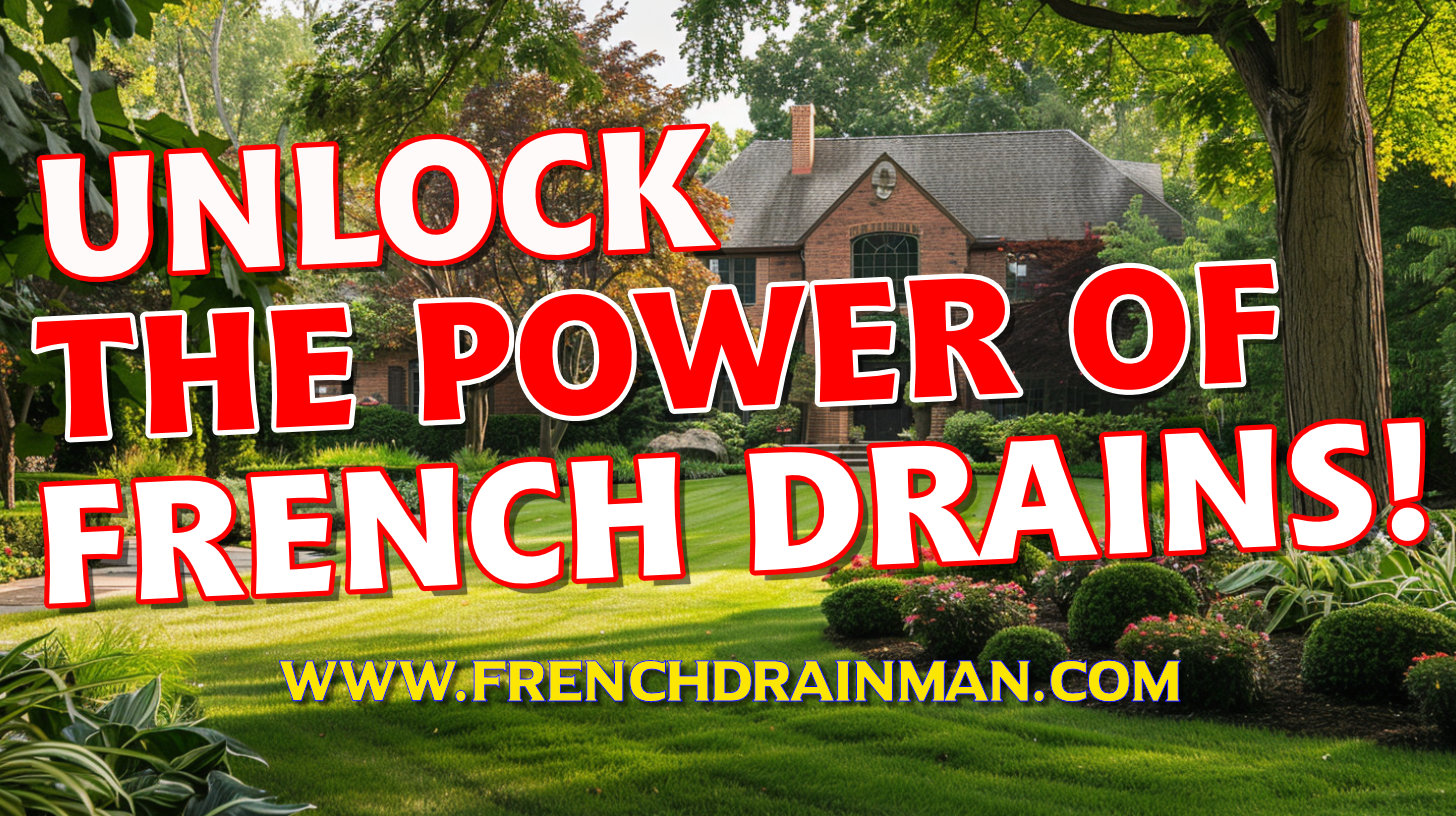
Proper yard drainage is crucial to the health and security of any property. Without an effective drainage system, water can collect around your foundation and cause structural damage or basement seepage. The French drain is a proven way of handling excess water; this time-tested technique uses perforated pipes filled with gravel to direct excess water away from problem areas, protecting foundations by avoiding waterlogging and protecting home foundations from seepage.
This article explores the science of French drains, delving deep into how they function and why they’re effective at managing water on your property. By understanding their principles and benefits, you can make informed decisions about managing water on your property. Whether you want to avoid damage caused by excess rainfall or are simply curious about advanced drainage solutions, this guide offers everything necessary to comprehend French drains’ value.
History of French Drains
French drains date back to the mid-19th century and can be traced to Henry Flagg French, a lawyer and Assistant US Treasury Secretary from Concord, Massachusetts. In his 1859 book “Farm Drainage,” French popularized using gravel-filled trenches to direct excess moisture away from areas with excess moisture, including agricultural fields. His innovative drainage approach quickly gained widespread recognition due to its effectiveness in managing agricultural fields while protecting structures against water damage. French used trenches lined with stones or gravel that allowed seepage to be channeled away – creating the groundwork for modern drainage systems today.
French drain design and usage have progressed rapidly over time. At first, these systems relied solely on gravel and stone for water filtering and diversion. Still, recent advancements in materials and technology have allowed perforated pipes and geotextile fabrics to enhance the efficiency and durability of French drains, improving collection/flow rates while decreasing the risk of clogs/system failure. Today, French drains, from residential yards to commercial properties to agricultural fields, can be seen everywhere, proving their versatility and lasting relevance.
French drains have quickly become popular solutions for drainage issues, making them popular among homeowners and professionals. By understanding their historical development and evolution, we can better appreciate their design ingenuity and why they remain reliable ways of handling excess water. Furthermore, this history helps highlight how continuous innovation must occur to meet modern demands for drainage solutions.
Basic Principles of French Drains
French drains operate using simple yet highly effective principles. Their core design involves a perforated pipe surrounded by stone or crushed rock and covered by filter fabric; water enters via its perforations and can then flow away from areas of accumulation via perforations; stone acts as a conduit, helping water enter more smoothly into the system while keeping large debris out; the filter fabric enhances this further by keeping soil and fine particles out ensuring long-term functionality of this drainage solution.
French drains rely heavily on gravity to be effective. Once installed properly, they provide an effortless drainage solution requiring minimal ongoing maintenance costs. They usually feature a slight slope—typically about one inch per 10 feet—which guides water naturally away from any areas of concern and towards their discharge point in the pipe system. Leveraging gravity offers passive drainage solutions with minimal upkeep requirements once correctly installed.
French drains should be installed strategically around houses, yards, or slopes where water tends to accumulate. By intercepting and redirecting water flow, French drains help prevent issues like basement seepage, soil erosion, and plant roots clogging up with excess moisture—an invaluable asset in maintaining the structural integrity of buildings and the health of landscapes. Knowing these basic principles illustrates why French drains are preferred for managing water in different environments.
Soil and Water Dynamics
Understanding soil and water dynamics is paramount for effectively deploying a French drain. Different soil types possess differing levels of permeability, which influences how water moves through them; clay soil has fine particles that collect and hold onto water, leading to poor drainage and even possible flooding; its dense structure prevents it from moving freely through it, thus leading to accumulation and sogginess – making french drain implementation even more problematic due to slow percolation rates that could overload it quickly if misdesigned.
Sandier soil contains larger particles that allow water to drain off quickly, thus avoiding accumulation. Although this rapid drainage helps avoid waterlogging, sandy soil retains less moisture for plant health, making French drains more straightforward to manage with quicker flow into their drainage systems and out through French drains. But to ensure adequate capture and direction away from an area and to prevent erosion or topsoil loss.
Loam soil strikes an ideal balance between clay and sandy soils, making it suitable for most gardening and landscaping applications. It offers adequate drainage without waterlogging while retaining sufficient moisture and nutrients to support robust plant growth. French drains installed in such conditions work efficiently due to satisfactory water flow without experiencing extremes in retention or rapid drainage typical of clay or sandy soils.
An effective French drain system uses soil permeability and water movement to design effective systems. Before installation, soil tests should be undertaken in your yard to understand its specific characteristics. These tests can reveal its composition and permeability, influencing decisions about depth, placement, stone type selection, and the overall design of your drainage system. Tailoring it specifically to local conditions increases efficiency and lifespan significantly.
Additionally, soil and water dynamics are integral to how well a drain performs over time. For instance, areas with heavy clay soil may require increasing trench depth and using larger pipe diameters to accommodate for slow percolation rates; conversely, in sandy soil areas, the focus may shift toward erosion prevention and ensuring water capture before dissipation too rapidly. Understanding these dynamics aids initial design and installation, ongoing system management, and troubleshooting of any issues.
By conducting an in-depth analysis of your property’s soil and water dynamics, you can design a French drain system that effectively manages excess water while protecting landscape features and assuring your yard’s long-term health and stability. Understanding this aspect is vital for homeowners and professionals looking for sustainable drainage solutions.
Installation Process
A French drain installation requires careful execution to ensure long-term effectiveness and durability. At French Drain Man, our installation process uses a precise yet proven methodology that guarantees optimal performance and longevity of our French drain installations. Here is an in-depth, step-by-step guide detailing this installation process.
Step One: Trench Excavation
First, dig a trench along your desired drainage path. It must be both deep and wide enough to accommodate a drainage pipe with sufficient stone layers—typically 18-24 inches deep by 12-18 inches wide should suffice. Furthermore, slope it to run at an average rate of one inch per 10 feet to promote natural water flow through your system.
Step Two: Lining a Trench With Geotextile Filter Fabric
Once we excavate a trench, we line it with double-punched geotextile filter fabric. This fabric prevents soil and fine particles from entering the drainage system and reducing its effectiveness; to be effective, it must be laid out smoothly along its entire length and width to ensure there are no gaps or folds that might allow soil seepage through.
Step 3: Install the Corrugated Pipe
After lining a trench, we install a perforated corrugated pipe at its base. In cases requiring higher water volumes to be managed, two pipes may be installed side-by-side to create more void space and move more significant amounts efficiently. These pipes’ perforations allow soil water to enter, while their corrugated design provides flexibility and durability against changes in ground pressure and water pressure variations.
Step Four: Protecting Pipe with Stones
As soon as your pipe(s) are in place, the next step is to cover them with stone. We use clean, large round stones to fill our trench, surrounding each pipe in its path with voids that allow water to enter freely while also keeping soil out. This layer of stone is crucial in aiding water collection while avoiding clogging issues.
Step 5: Pinning Filter Fabric Together
Once we’ve filled our trench with stone, we use geotextile filter fabric to cover it, fully encasing our French drain system completely. After folding over, the fabric is secured in place so it remains in its proper place and continues filtering soil and debris effectively—an essential step to ensure the drain’s long-term effectiveness as it prevents fine particles from infiltrating into its system and potentially clogging it up.
Step 6: Replacing Sod
To complete the installation process, the final step involves carefully replacing any sod that was removed during excavation of the trench. Sod is carefully laid back onto an encapsulated French drain to restore its appearance in the yard – this ensures that not only does the French drain provide functionality, but it blends in seamlessly into its landscape environment as well.
By following these precise steps, French Drain Man ensures each French drain system is installed to meet the highest standards of quality and efficiency. Our thorough installation process guarantees that each system will effectively manage excess water, protect your property against potential water damage, and preserve the health and beauty of your landscape for many years to come.
Effectiveness of French Drains
French drains are an effective and economical way to manage excess water, making them an appealing solution for homeowners in various scenarios. Their design allows for efficient collection and redirection, helping prevent accumulation around foundations, basements, and low-lying parts of your yard. Installing one may reduce structural damage risk and basement seepage – maintaining an oasis-free landscape is just an added benefit of adding French drains.
One of the hallmarks of French drains’ effectiveness lies in their capacity to manage large volumes of water. Their combination of perforated pipes and surrounding stones creates a significant void space, allowing water to flow freely into and be directed away from problem areas. This feature can prove especially valuable during heavy rainfall events or regions with high water tables where fast drainage can prevent flooding and erosion. Double-punched geotextile filter fabric keeps your system free of clogs, prolonging its functionality over time.
Case studies and real-world examples further demonstrate the efficacy of French drains. French drains have proven their worth in areas prone to frequent rainfall or properties with heavy clay soil, providing homeowners with a reliable means of controlling water flow. Homeowners who have implemented French drains report significant improvements in yard drainage with reduced instances of standing water and improved soil conditions; additionally, they can easily be integrated with other drainage solutions like sump pumps or catch basins to form an all-encompassing water management system, making French drains an invaluable tool in safeguarding against issues related to water flow management!
By understanding the effectiveness of French drains and their applications, homeowners can make more informed decisions regarding their drainage needs. From minor water accumulation issues to potential flood risks, French drains provide a reliable and cost-effective solution. Installing them not only protects your property but also contributes to improving its long-term health and beauty.
Maintenance and Longevity
French Drain Man stands out among installers by adhering to an installation process designed to encase its drainage systems fully. Its drainage systems are protected from soil and debris infiltration by lining trenches with double-punched geotextile filter fabric and covering perforated pipes with substantial layers of stone. This dramatically reduces maintenance needs by avoiding clogging while guaranteeing the long-term functionality of its drains.
Fully encased French drains from French Drain Man are engineered to require minimal upkeep, thanks to their geotextile fabric filter that filters out fine particles from draining pipes and keeps the system clear of obstructions. Unlike other drainage solutions, which may need frequent inspections and cleanings, French Drain Man offers effective French drain installations that continue functioning reliably without frequent intervention; homeowners can rest easy knowing their investment is protected for many years ahead.
Even though maintenance requirements for drain systems are minimal, regular inspections should still be conducted to ensure everything is in working order. Inspecting your system after heavy rainfall or seasonal changes can help detect any potential problems early. Look out for signs such as surface water accumulation, sogginess in your yard, or any visible damage to sod covering drains that could indicate compromised sections that require repairs.
French Drain Man offers fully encapsulated French drain systems that require little maintenance, making these hassle-free solutions for yard drainage simple, affordable, and long-term. Homeowners can ensure their French drain’s continued performance and longevity by inspecting their system regularly and promptly addressing any minor issues. Professional maintenance services are also available to keep it operating optimally and protect its property against future water-related issues.
Common Myths and Misconceptions
French drains are an increasingly popular solution for controlling excess water, but some myths and misconceptions about them persist. Such misperceptions could cause homeowners to make uninformed decisions or avoid using French drains altogether. Here, we dispel some of these widespread falsehoods to depict their effectiveness and utility accurately.
Myth 1: French Drains Are Only Appropriate for Large Properties
One common misperception about French drains is that they’re only suitable for large properties or extensive landscaping projects. But in reality, French drains can be tailored to fit any yard size—from residential plots to expansive commercial spaces—due to their adaptability in design and installation. This makes them an effective solution for managing water in various settings. French drains can adapt quickly to your drainage requirements, whether your backyard pools up often or your estate boasts several low-lying areas.
Myth 2: Installing French Drains Can Be Expensive
French drains may seem prohibitively costly, but this misconception shouldn’t persist. While costs will depend on the complexity and materials required of any project, French drains are cost-effective solutions compared to alternative drainage methods; long-term benefits, like protecting homes against water damage, soil erosion, and foundation issues, usually outweigh initial investments made. DIY installation options also make French drains accessible to more homeowners than ever.
Myth 3: French Drains Require Frequent Maintenance
Some homeowners believe French drains require frequent and intensive maintenance to remain functional, however when installed correctly and fully encapsulated French drains require minimal upkeep. Geotextile filter fabric combined with proper installation techniques from French Drain Man can ensure your system operates without any clogs for years; periodic inspections and occasional cleanings typically suffice in keeping up the system, providing an economical and low-maintenance solution for yard drainage needs.
Myth 4: French Drains Are Ineffective on Clay Soil
Many have the misconception that French drains do not perform effectively in clay soil due to its poor drainage characteristics. While clay soil can present challenges when managing water effectively, French drains can still effectively manage this situation when adequately designed and installed. By creating more extensive trenches with additional stone layers and creating proper slopes on which the rest, French drains can adapt themselves to accommodate their slower percolation rate. Tailoring installations according to specific soil conditions is the key to optimizing the effectiveness of French drainage systems.
Myth 5: French Drains Can Only Be Used for Yard Drainage
Many people assume French drains are limited to managing yard drainage, but their applications go much further than that. French drains have numerous applications ranging from basement waterproofing and retaining wall drainage solutions to interior drainage solutions and interior waterproofing—they truly cover every facet of water management issues! Homeowners can maximize French drain usage across their property by understanding their uses and benefits.
By debunking some common myths and misconceptions surrounding French drains, we hope to give a more accurate picture of their benefits and versatility. They are an economical and low-maintenance way to manage excess water on your property while protecting it with protection. If you have any inquiries or concerns about French drains, consulting a professional like French Drain Man may help ensure informed decisions for ensuring successful drainage projects.
Discover French Drain Man’s Online Store: Quality Made in the USA
At French Drain Man, our mission is to offer only top-tier drainage products that ensure the success and longevity of our drainage systems. Our online store features an expansive selection of durable American-made products designed for every project imaginable—perfect whether you are a DIY enthusiast or a professional contractor looking for effective French drain systems!
High-Quality Products Crafted in the United States
Our inventory features all the essential components for French drains, such as perforated corrugated pipes, double-punched geotextile filter fabric, and clean, large round stones. Each product is selected and manufactured to meet our stringent quality and performance standards. By purchasing domestically made products, we ensure they use superior materials and craftsmanship, giving our customers access to tools designed specifically to address their drainage needs.
An Exhaustive Range of Drainage Solutions Available Now
The French Drain Man online store provides more than essential components. Our comprehensive selection of drainage solutions addresses a range of water management issues. Our product lineup includes:
- Perforated Corrugated Pipes: Our pipes are designed for maximum flexibility and durability, making them ideal for collecting and diverting water away from problematic areas.
- Double-Punched Geotextile Filter Fabric: This high-grade fabric prevents soil and debris from entering your drainage system, ensuring its long-term functionality.
- Catch Basins and Pop-Up Emitters: These accessories help direct surface water away from your home’s foundation and towards catch basins or pop-up emitters, helping manage surface moisture more effectively.
- Fittings and Connectors: We carry an assortment of fittings, such as wye fittings and end caps, that provide seamless connections for optimal water flow within drainage systems.
- Root Barrier Solutions: Copper Sulfate products help deter root intrusion, protect drainage systems from potential blockages, and support DIY and professional projects.
No matter the scope or scale of your landscaping project, our online store will have what you need – from minor backyard drainage issues to complex landscape design projects, with thorough product descriptions and specifications that allow for informed decisions regarding the ideal components for each task. Furthermore, our knowledgeable team provides invaluable advice and guidance, helping ensure successful results are reached.
Customer Satisfaction Is our Top Priority
Our dedication to customer satisfaction is second to none at French Drain Man. We understand that installing and maintaining a drainage system can be expensive, so our mission is to deliver products with exceptional value and performance at competitive prices in America – helping protect property while creating healthy landscapes! Our products come straight out of America, so they last for many years of use while protecting property and creating healthy landscapes!
Discover French Drain Man’s premium American-made products online store now. Everything you need for successful water management, from individual components to complete drainage solutions, is here! We guarantee it.
French Drain Man provides high-quality drainage products and supports American manufacturing and craftsmanship. Visit our online store now and take the first steps toward developing an efficient drainage system for your property!
Take Action Now: Protect Your Property with French Drain Man
Don’t wait until water damage becomes a costly problem. Ensure your property is protected with top-quality drainage solutions from French Drain Man. Whether you need expert installation services or high-quality products made in the USA for your DIY project, we have you covered.
Explore our online store to find everything you need to build and maintain an effective French drain system. From perforated corrugated pipes and double-punched geotextile filter fabric to catch basins, pop-up emitters, and more, we offer the best in drainage solutions.
Contact French Drain Man today for personalized advice and professional installation services in Macomb, Oakland, Lapeer, and St. Clair Counties. Our expert team is ready to help you create a robust drainage system tailored to your needs.
Visit our online store or call us at 248-505-3065 to get started. Protect your home and landscape with the best drainage solutions available. Act now to ensure the long-term health and beauty of your property.
Additional Resources
- Subscribe to the French Drain Man YouTube Channel
- U.S. Geological Survey (USGS) – Understanding Groundwater and Soil Interaction
- This resource provides detailed information on how groundwater interacts with different soil types, which can help readers understand the importance of soil composition in drainage systems.
- Link to USGS Resource
- Environmental Protection Agency (EPA) – Managing Stormwater
- The EPA offers valuable insights on stormwater management practices, which can be helpful for homeowners looking to understand broader water management strategies.
- Link to EPA Resource
- American Society of Landscape Architects (ASLA) – Sustainable Landscape Design
- The ASLA provides guidelines and case studies on sustainable landscape design, including using drainage systems like French drains.
- Link to ASLA Resource





